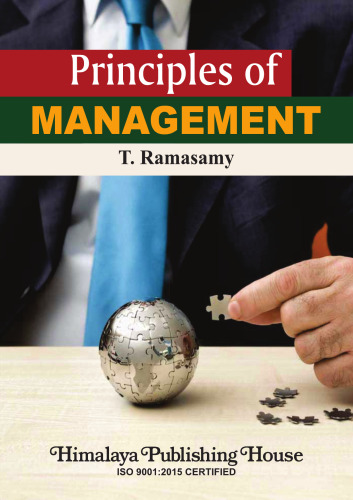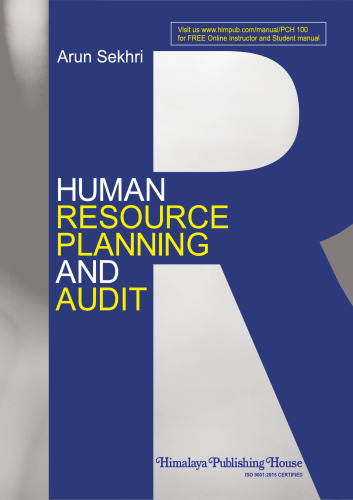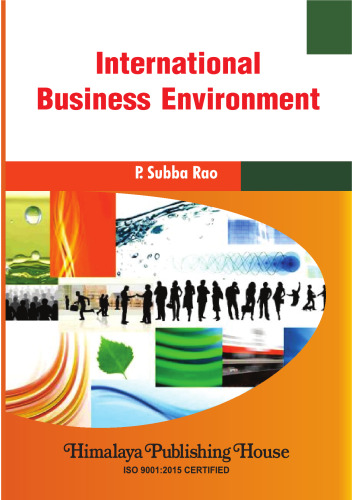2 READING MEDIA AIMS This chapter will introduce you to: � textual analysis for still images; � textual analysis for moving images; � approaches to critical media literacy for time-based and space- based texts; � new conceptual models for deconstructing contemporary media forms. Textual analysis refers to the study of specific elements of media texts that can be deconstructed only through the act of ‘close reading’. Whilst there is a great deal of crossover, for the purposes of introducing this practice, still images are usually considered first, before moving on to moving image analysis. Then, the ‘micro’ features of texts are assessed in a thematic way to relate them to broader ‘macro’ conceptual models of media analysis. MEDIA LANGUAGE: STILL IMAGE ANALYSIS Media language describes the combination of written, verbal, non-verbal, aural and aesthetic communication and its instanta- neous connection to meaning. The task of the critically media literate student is simply to ‘deconstruct’ this assemblage of meaning. Generally, media courses begin with still images and work on to moving images, so for this reason this chapter follows suit. Still image analysis often begins with semiotics – the study of signs. Semiotics is a branch of Structuralism, and notable figures in this theoretical school include Peirce, Saussure and Barthes. Structuralism sought to identify structures that provide a network for meaning as located in texts (stories, images, clothes, films, videogames, dance movements – anything that carries meaning beyond its physical properties). The focus here is on how meaning is constructed within a culture in a systematic way. Semiotics looks at meaning at the level of the individual sign, which is divided into its signifier and its sig- nified. If the sign is a man’s tie, then the signifier is the physical property that we can all agree on (a garment around a man’s neck with a particular texture and colour) and the signified is what meaning we attribute to it – this is conceptual – we imagine it, or at least agree on what it ‘means’ without there being a ‘natural’ logical reason why it should mean this. So, there is an agreement that a man ought to wear a tie in certain situations – certain forms of work or business, often at a wedding, certainly for most people at a job interview. But why? The signified is to do with formality, being ‘smart’, appropriate attire, taking thing seriously. But the signifier doesn’t in itself dictate that. It is a cultural decision. Our names are signs, as are all words. Once we learn a language, we cannot stop to disconnect the signifier from the signified. When we are in a foreign country where we cannot understand the language, we just hear the sounds, but once we know the language we are constantly and instantaneously decoding the meaning of every sign. Here is an illustration: Read these words (they are in Lithuanian): braškiu ̨ ir šalto alaus. A minority of readers may be or may speak Lithuanian, but the chances are that most readers have no idea what these signs (letters, combined together in words) mean. In English, they translate as ‘strawberries and cold beer’. When you are looking at this second set of signifiers, you can’t help but attach the signified – you are thinking of the fruit and the beverage and its temperature. This is how signs work – the sig- nified is instantly attached. But this is only the first level of signification, of course. Next, personal life experience and one’s culture, values and taste come in to add a level of connotation. Perhaps it means summer- time or a picnic to some readers. Or it might mean hospital – if you are allergic to strawberries. The signified is not fixed for everyone. READING MEDIA 33 Media texts are combinations of lots of signs. Creators of texts make decisions about settings, objects, costume, appearance, dia- logue, sound, lighting – all of these are signifiers. According to semiotics, there are three kinds of signs: ICONIC SIGNS These have a direct resemblance to what they represent in the ‘real world’ – for example, a photograph of a celebrity or somebody you know, or a painting of a church that really exists. SYMBOLIC SIGNS These have a completely arbitrary, or ‘made up’, cultural connec- tion to what they represent – once we agree on the meaning, we accept it, but if we wanted to, we could change it. For example, a ‘no entry’ road sign doesn’t have to look the way it does. Equally, the word ‘zoo’ could be exchanged for the word ‘chair’. Come in and pull up a zoo. We’re all going to the chair tomorrow. It sounds crazy, for sure, but if we just agreed to swap them around, it wouldn’t matter because they are just symbols for the concepts they signify – a four-legged structure to sit on or a collection of animals kept in custody to entertain and educate humans. INDEXICAL SIGNS These have some kind of indirect or suggestive relationship to what they represent – for example, a ‘no smoking’ sign which does feature a ‘referent’ of/to a cigarette, but the red line which is across it does not really appear in the physical world when a smoker lights up in an ‘illegal’ space. But the red line suggests ‘crossing out’, so this kind of sign is not as purely symbolic or as arbitrary as the no entry sign example. The richest example for discussion is the cross symbol from Christianity. To a Christian who takes the bible literally, this will be iconic. To an atheist, it’s symbolic. To another kind of Chris- tian, it’s either more or less symbolic or more or less indexical depending on the extent to which the crucifixion is taken as a historical event and the extent to which it’s symbolic of a set of ideas about faith. READING MEDIA34 spontaneity. In Michel Gondry’s Eternal Sunshine of the Spotless Mind (2004), the character Clementine Kruczynski sums up (and dispels) this myth of femininity when she says, ‘Too many guys think I’m a concept, or I complete them, or I’m gonna make them alive. But I’m just a fucked-up girl who’s lookin’ for my own peace of mind; don’t assign me yours.’ The wristband is foregrounded. The colourful frayed string contrasts with the formal black leather watch strap further contributing to this suggestion that he is reluctantly or tem- porarily assuming this spirit of freedom either for the duration of this holiday or the duration of the relationship with the girl in front of him. An alternative or oppositional reading might be that she is possessive – has slapped this friendship bracelet on him to mark him as her territory (a symbolic handcuff, if you like), though again, nothing else in this image suggests sinister undertones. This may be an important moment in the life of a young man in love or, more likely, an image constructed for a free picture library for companies (and writers of books) to download and use to sell an idea, a myth of freedom, happiness and leisure to sell a product or service. Yet the problem with these agreed upon mythical meanings is that they become naturalised and the ideologies they carry often go unchallenged (our consent is, once again, manu- factured without our noticing).
چکیده فارسی
2 اهداف رسانه خواندن این فصل شما را با موارد زیر آشنا می کند: تجزیه و تحلیل متن برای تصاویر ثابت. تجزیه و تحلیل متن برای تصاویر متحرک. رویکردهای سواد رسانه ای انتقادی برای متون زمان محور و مکان محور؛ مدلهای مفهومی جدید برای ساختارشکنی فرمهای رسانهای معاصر تحلیل متنی به مطالعه عناصر خاصی از متون رسانه ای اشاره دارد که تنها از طریق «خواندن نزدیک» قابل تجزیه هستند. در حالی که مقدار زیادی متقاطع وجود دارد، برای اهداف معرفی این عمل، معمولاً قبل از حرکت به تحلیل تصویر متحرک، ابتدا تصاویر ثابت در نظر گرفته میشوند. سپس، ویژگیهای «خرد» متون به روشی موضوعی ارزیابی میشوند تا آنها را با مدلهای مفهومی «کلان» گستردهتر تحلیل رسانهای مرتبط کند. زبان رسانه: تجزیه و تحلیل تصویر ثابت زبان رسانه ترکیبی از ارتباطات نوشتاری، کلامی، غیرکلامی، شنیداری و زیبایی شناختی و ارتباط آنی آن با معنا را توصیف می کند. وظیفه دانشآموز با سواد رسانهای انتقادی این است که این مجموعه معنا را «تشکیل» کند. به طور کلی، دوره های رسانه ای با تصاویر ثابت شروع می شود و روی تصاویر متحرک کار می کند، بنابراین این فصل از همین روش پیروی می کند. تحلیل تصویر ثابت اغلب با نشانه شناسی – مطالعه نشانه ها – آغاز می شود. نشانه شناسی شاخه ای از ساختارگرایی است و از چهره های شاخص این مکتب نظری می توان به پیرس، سوسور و بارت اشاره کرد. ساختارگرایی به دنبال شناسایی ساختارهایی بود که شبکهای برای معنا فراهم میکنند که در متون قرار دارند (داستانها، تصاویر، لباسها، فیلمها، بازیهای ویدیویی، حرکات رقص - هر چیزی که معنایی فراتر از ویژگیهای فیزیکی خود را حمل میکند). تمرکز در اینجا بر این است که چگونه معنا در یک فرهنگ به روشی سیستماتیک ساخته می شود. نشانه شناسی به معنا در سطح نشانه فردی می نگرد که به دال و مدلول آن تقسیم می شود. اگر علامت کراوات مردانه باشد، دال آن ویژگی فیزیکی است که همه ما می توانیم در مورد آن اتفاق نظر داشته باشیم (لباسی به گردن مرد با بافت و رنگ خاص) و مدلول معنایی است که به آن نسبت می دهیم - این مفهومی است - ما آن را تصور می کنیم، یا حداقل در مورد «معنای» آن توافق داریم، بدون اینکه دلیل منطقی «طبیعی» وجود داشته باشد که چرا باید به این معنی باشد. بنابراین، توافقی وجود دارد که یک مرد باید در موقعیتهای خاصی کراوات بپوشد - اشکال خاصی از کار یا تجارت، اغلب در عروسی، قطعا برای اکثر افراد در یک مصاحبه شغلی. اما چرا؟ مدلول مربوط به رسمی بودن، «هوشمند» بودن، لباس مناسب، جدی گرفتن موضوع است. اما دال به خودی خود این را دیکته نمی کند. این یک تصمیم فرهنگی است. نام ما نشانه است، همانطور که همه کلمات هستند. هنگامی که زبانی را یاد می گیریم، نمی توانیم برای قطع ارتباط دال از مدلول متوقف شویم. وقتی در یک کشور خارجی هستیم که نمی توانیم زبان را بفهمیم، فقط صداها را می شنویم، اما زمانی که زبان را می شناسیم، دائماً و فوراً معنای هر نشانه را رمزگشایی می کنیم. در اینجا یک مثال است: این کلمات را بخوانید (آنها به زبان لیتوانیایی هستند): braškiu ̨ ir šalto alaus. اقلیتی از خوانندگان ممکن است لیتوانیایی صحبت کنند یا ممکن است صحبت کنند، اما به احتمال زیاد اکثر خوانندگان نمی دانند این نشانه ها (حروف، ترکیب شده با یکدیگر در کلمات) به چه معنا هستند. در انگلیسی، آنها به عنوان "توت فرنگی و آبجو سرد" ترجمه می شوند. وقتی به مجموعه دوم دال ها نگاه می کنید، نمی توانید مدلول را ضمیمه نکنید - به میوه و نوشیدنی و دمای آن فکر می کنید. نشانه ها به این ترتیب کار می کنند - علامت فوراً متصل می شود. اما این فقط اولین سطح دلالت است، البته. در مرحله بعد، تجربه زندگی شخصی و فرهنگ، ارزشها و ذائقهی فرد به سطحی از مفهوم اضافه میشود. شاید برای برخی از خوانندگان به معنای تابستان یا پیک نیک باشد. یا ممکن است به معنای بیمارستان باشد - اگر به توت فرنگی حساسیت دارید. مدلول برای همه ثابت نیست. READING MEDIA 33 متون رسانه ای ترکیبی از نشانه های زیادی هستند. سازندگان متون در مورد تنظیمات، اشیا، لباس، ظاهر، گفتگو، صدا، نور تصمیم می گیرند – همه اینها دال هستند. بر اساس نشانهشناسی، سه نوع نشانه وجود دارد: نشانههای نمادین این نشانهها شباهت مستقیمی به آنچه در «دنیای واقعی» نشان میدهند دارند – برای مثال، عکسی از یک فرد مشهور یا شخصی که میشناسید، یا نقاشی از یک کلیسا که واقعاً نشان میدهد. وجود دارد. نشانههای نمادین اینها یک ارتباط فرهنگی کاملاً دلخواه یا «ساختهشده» با آنچه نشان میدهند دارند – هنگامی که در مورد معنی به توافق رسیدیم، آن را میپذیریم، اما اگر بخواهیم، میتوانیم آن را تغییر دهیم. برای مثال، تابلوی جادهای «ورود ممنوع» لزومی ندارد که به شکل ظاهری باشد. به همین ترتیب، کلمه "باغ وحش" را می توان با کلمه "صندلی" مبادله کرد. بیا داخل و یک باغ وحش بکش. فردا همگی میریم صندلی مطمئناً دیوانه کننده به نظر می رسد، اما اگر ما فقط با تعویض آنها موافقت کنیم، مهم نیست زیرا آنها فقط نمادهایی برای مفاهیمی هستند که نشان می دهند - یک سازه چهار پا برای نشستن یا مجموعه ای از حیوانات که در بازداشت نگه داشته می شوند. انسان ها را سرگرم و آموزش دهد. نشانههای غیرمستقیم اینها نوعی رابطه غیرمستقیم یا پیشنهادی با آنچه نشان میدهند دارند - به عنوان مثال، یک علامت "سیگار ممنوع" که دارای "مرجع" سیگار است، اما خط قرمزی که در سراسر آن است واقعاً ظاهر نمیشود. در دنیای فیزیکی زمانی که یک سیگاری در یک فضای "غیرقانونی" روشن می شود. اما خط قرمز نشاندهنده «عبور کردن» است، بنابراین این نوع علامت بهاندازه نمونه علامت ورود ممنوع، صرفاً نمادین یا اختیاری نیست. غنی ترین مثال برای بحث، نماد صلیب از مسیحیت است. برای مسیحی که کتاب مقدس را به معنای واقعی کلمه می گیرد، این نماد خواهد بود. برای یک ملحد، این نمادین است. برای نوع دیگری از مسیحیان، بسته به میزانی که مصلوب شدن بهعنوان یک رویداد تاریخی تلقی میشود و میزان نمادی بودن آن از مجموعهای از ایدهها درباره ایمان، کمابیش نمادین یا کمابیش شاخص است. READING MEDIA34 خودانگیختگی. در آفتاب ابدی ذهن بیخال (2004) اثر میشل گوندری، شخصیت کلمنتین کروچینسکی این افسانه زنانگی را خلاصه میکند (و رد میکند) وقتی میگوید: «بسیاری از مردان فکر میکنند من یک مفهوم هستم، یا آنها را کامل میکنم، یا من». من آنها را زنده خواهم کرد اما من فقط یک دختر لعنتی هستم که به دنبال آرامش خودم است. به من مال خودت را واگذار نکن.» مچ بند در جلوی زمین قرار دارد. ریسمان رنگارنگ ساییده شده در تضاد با بند ساعت چرمی مشکی رسمی است که بیشتر به این پیشنهاد کمک می کند که او با اکراه یا موقتاً این روحیه آزادی را در طول این تعطیلات یا مدت زمان رابطه با دختر مقابلش به دست می آورد. . یک قرائت جایگزین یا مخالف ممکن است این باشد که او مالکیت دارد - این دستبند دوستی را به او زده است تا او را به عنوان قلمرو خود نشان دهد (اگر بخواهید، یک دستبند نمادین)، هرچند باز هم، هیچ چیز دیگری در این تصویر حاکی از ته مایه های شوم نیست. این ممکن است لحظه مهمی در زندگی یک مرد جوان عاشق باشد یا به احتمال زیاد، تصویری که برای یک کتابخانه عکس رایگان برای شرکت ها (و نویسندگان کتاب) ساخته شده است تا آن را دانلود کرده و از آن برای فروش یک ایده، اسطوره آزادی استفاده کنند. شادی و فراغت برای فروش یک محصول یا خدمات. با این حال، مشکل این معانی اسطورهای مورد توافق این است که آنها طبیعی میشوند و ایدئولوژیهایی که حمل میکنند اغلب بدون چالش باقی میمانند (رضایت ما بار دیگر بدون توجه ما ساخته میشود).
ادامه ...
بستن ...
Second edition published 2020
by Routledge
2 Park Square, Milton Park, Abingdon, Oxon OX14 4RN
and by Routledge
52 Vanderbilt Avenue, New York, NY 10017
Routledge is an imprint of the Taylor & Francis Group, an informa business
© 2020 Julian McDougall and Claire Pollard
The right of Julian McDougall and Claire Pollard to be identified as authors of this
work has been asserted by them in accordance with sections 77 and 78 of the
Copyright, Designs and Patents Act 1988.
All rights reserved. No part of this book may be reprinted or reproduced or utilised
in any form or by any electronic, mechanical, or other means, now known or
hereafter invented, including photocopying and recording, or in any information
storage or retrieval system, without permission in writing from the publishers.
Trademark notice: Product or corporate names may be trademarks or registered
trademarks, and are used only for identification and explanation without intent to
infringe.
First edition published by Routledge 2012
British Library Cataloguing-in-Publication Data
A catalogue record for this book is available from the British Library
Library of Congress Cataloging-in-Publication Data
A catalog record has been requested for this book
ISBN: 978-1-138-34915-5 (hbk)
ISBN: 978-1-138-34916-2 (pbk)
ISBN: 978-1-138-34917-9 (ebk)
Typeset in Bembo
by Taylor & Francis Books
ادامه ...
بستن ...
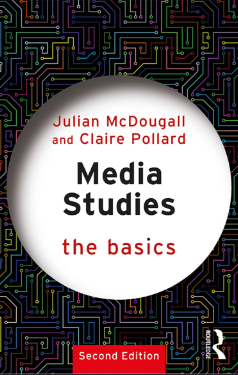
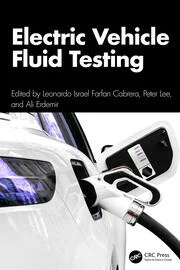


![Our mission to the court of Marocco [Morocco] in 1880, under Sir John Drummond Hay - pdf Our mission to the court of Marocco [Morocco] in 1880, under Sir John Drummond Hay - pdf](https://dl.libsan.ir/images/1/12/112108724_694b9e9769312.jpg)



